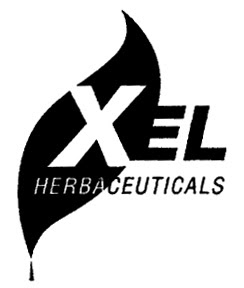TTABlog Quarterly Index: January 2008 - March 2008
For those who haven't noticed, e-mail subscriptions to the TTABlog are available. Just enter your e-mail address in the box on the right to receive a daily update via Feedblitz.

Section 2(a) - Deceptiveness:
- TTAB Affirms 2(a) Deceptiveness Refusal of "MINK BIKINI" for Minkless Clothing
- Finding "MINK" Deceptive and Deceptively Misdescriptive for Clothing, TTAB Affirms 2(a) and 2(e)(1) Refusals
Section 2(a) - False Connection:
Section 2(d) - Likelihood of Confusion:
- TTAB Grants 2(d) Summary Judgment: "MEIER'S" and "MEYER VINEYARD" for Wine Confusingly Similar
- TTAB Finds Design Marks for Motorcycles Confusingly Similar: What Say You?
- Fame Dominates as TTAB Sustains "PLAYBOY" Opposition to "PLAY BODY" for Clothing
- Precedential No. 10: TTAB Sustains "VITAMILK" 2(d) Opposition, Again Rejects a Morehouse Defense
- TTAB Dubiously Finds "SOCK-UM" for a Parlor Game Confusingly Similar to "ROCK'EM SOCK'EM ROBOTS" for Action Games
- TTAB Reverses 2(d) Refusal: "ROYALE" for Camping Trailers Not Confusingly Similar to "ROYAL CARGO" for Cargo Trailers
- TTAB Finds "HERBAL REPUBLIC" and "THE REPUBLIC OF TEA" Confusingly Similar for Tea
- TTAB Dimisses 2(d) Opposition for Lack of Evidence: Opposer's Notice of Reliance Mailed to Wrong PTO Address
- Mesmerized by Fame of "VANITY FAIR" Mark, TTAB Sustains 2(d) Opposition to "VANITY INSANITY" for Clothing
- TTAB Rule of Thumb: Introduce No Evidence, Lose Your Opposition
- TTAB Finds "OLD TIMER" and "OLD TIMERS' HOCKEY CHALLENGE" for Clothing Too Dissimilar, Reverses 2(d) Refusal
- TTAB Finds "FYBY" for Silkscreening Services Confusingly Similar to "FUBU" Clothing Mark
- "LEGSTICK" Confusingly Similar to Famous "L'EGGS" Mark for Hosiery, Says TTAB
- Sophisticated Purchasers, Differences in Financial Services Lead TTAB to Reverse 2(d) Refusal of "BRIDGER CAPITAL" over "BRIDGER COMMERCIAL FUNDING"
- TTAB Rejects Parody Claim; Finds "IVY LEAGRO" Confusingly Similar to Famous "IVY LEAGUE" Marks
- "KIDS INN" and "CHILDREN'S INN" Confusingly Similar, At Least According to the TTAB
Section 2(e)(1) - Mere Descriptiveness:
- TTAB Reverses Mere Descriptiveness Refusal of "THE UNDERWEAR AFFAIR" for Charitable Fundraising Services
- TTAB Affirms Refusal of "FRESHHERBS.COM" for Herbs, Finding Mark Merely Descriptive and Specimen Faulty
- Precedential No. 1: TTAB Reverses Mere Descriptiveness Refusal of "SUGAR No. 11" For Futures Exchange Services and Finds Specimen of Use Acceptable
Section 2(e)(1) - Deceptive Misdescriptiveness:
Section 2(e)(2) - Primarily Geographically Descriptive:
- Precedential No. 4: TTAB Affirms Triple Refusal of "NORMANDIE CAMEMBERT" for Cheese
- "AMERICAN MASALA" Geographically Descriptive of Food Products, Says TTAB
Section 2(e)(3) - Primarily Geographically Descriptively Misdescriptive:
- Precedential No. 12: TTAB Sustains 2(e)(3) Opposition to "GUANTANAMERA" for Non-Cuban Cigars, Folk Song Notwithstanding
- Precedential No. 6: TTAB Clarifies Doctrine of Equivalents, Affirms 2(e)(3) Refusal of "MOSKOVSKAYA" for Vodka
- Precedential No. 4: TTAB Affirms Triple Refusal of "NORMANDIE CAMEMBERT" for Cheese
Section 2(e)(4) - Primarily Merely a Surname:
Section 2(f) - Acquired Distinctiveness:
- Precedential No. 8: Applicant Fails to Prove Acquired Distinctiveness for Sunglass Frame Product Design
- Finding Acquired Distinctiveness and Substantial Exclusivity Lacking, TTAB Cancels Registration for the Color Gold for Fluorescent Lamps

Disclaimers:
Failure to Function:
Fraud:
- Precedential No. 13: FRAUD! TTAB Cancels Four Registrations on Summary Judgment: Attorney Signed False Statements of Use
- TTAB Cancels "FEBAL USA" Registrations Obtained Fraudulently for U.S. Distributor
Functionality:
Genericness:
- Precedential No. 15: TTAB Again Affirms Genericness of "HOTELS.COM" for ... Guess What?
- Precedential No. 11: TTAB Finds "REDUCER" Generic for Flow Meters
- TTAB Affirms Genericness Refusal of "PEPPERMINT BARK" for Candy
Ornamental/Failure to Function:
Ownership of Mark:
Procedural Issues:
- TTABlog Practice Pointer: Include a Certificate of Service When Filing a Notice of Opposition
- Precedential No. 9: TTAB Issues Non-Ultimate Sanctions for Failure To Comply With Board Order Compelling Document Production
- TTABlog Practice Pointer: Not Every Final Refusal Merits an Appeal
- TTAB Dimisses 2(d) Opposition for Lack of Evidence: Opposer's Notice of Reliance Mailed to Wrong PTO Address
- Precedential No. 7: TTAB Dismisses 2(d) and Dilution Opposition for Lack of Evidence and Inadequate Pleading
- Precedential No. 67 (2007): Finding Two-Days' Notice Insufficient, TTAB Strikes Opposer's Testimony and Dismisses Opposition
- Precedential No. 5: TTAB Dismisses Opposition for Opposer's Failure to Serve Prior to Filing
- Precedential No. 3: NFL Thrown for a Loss as TTAB Denies Request to Extend Discovery
- Precedential No. 2: TTAB Issues Sanctions For Discovery Abuses
Rule 2.61(b) - PTO Demand for Information:
Specimens of Use:
- Software is Technology, Says TTAB: About Screen Language Suffices for Specimen of Use
- Precedential No. 14: TTAB Affirms Three Refusals: Website Specimens Fail to Show Trademark Use
- TTAB Affirms Refusal of "FRESHHERBS.COM" for Herbs, Finding Mark Merely Descriptive and Specimen Faulty
- Precedential No. 1: TTAB Reverses Mere Descriptiveness Refusal of "SUGAR No. 11" For Futures Exchange Services and Finds Specimen of Use Acceptable
Leo Stoller:
Other:
- Petition for Certiorari Filed by Portuguese Company Rosenruist re 4th Circuit Subpoena Ruling
- USPTO Issues Service Mark Registration for "THE TTABLOG"
- New PTO Rules Require Applicant to Describe Mark if not in Standard Characters
- Guest Article: Carrie Webb Olson on Fraud
- Second Circuit Affirms Summary Judgment Award re Buhkara State Unfair Competition Claim
- TTAB Posts March 2008 Hearing Schedule
- Unfriendly Shores? Recent Developments in U.S. Law May Trouble Foreign Trademark Owners
- TTAB Posts February 2008 Hearing Schedule
- PTO Letters of Protest: Is "CYBERLAW" Registrable?
- The Ten Worst TTAB Decisions of 2007? [Part 2 of 2]
- The Ten Worst TTAB Decisions of 2007? [Part 1 of 2]
- TTABlog Flotsam and Jetsam: Issue No. 11
- The Top Ten TTAB Decisions of 2007® [Part 2 of 2]
- The Top Ten TTAB Decisions of 2007® [Part 1 of 2]
- TTAB Issued 66 Precedential Decisions in 2007 (Make That 67!)
- TTABlog Hat Tip: Two Blog Anniversaries
- Fourth Circuit Rules that Foreign Company Must Appear in the USA for TTAB Testimony Pursuant to E.D.Va. Subpoena
- TTAB Posts January 2008 Hearing Schedule































